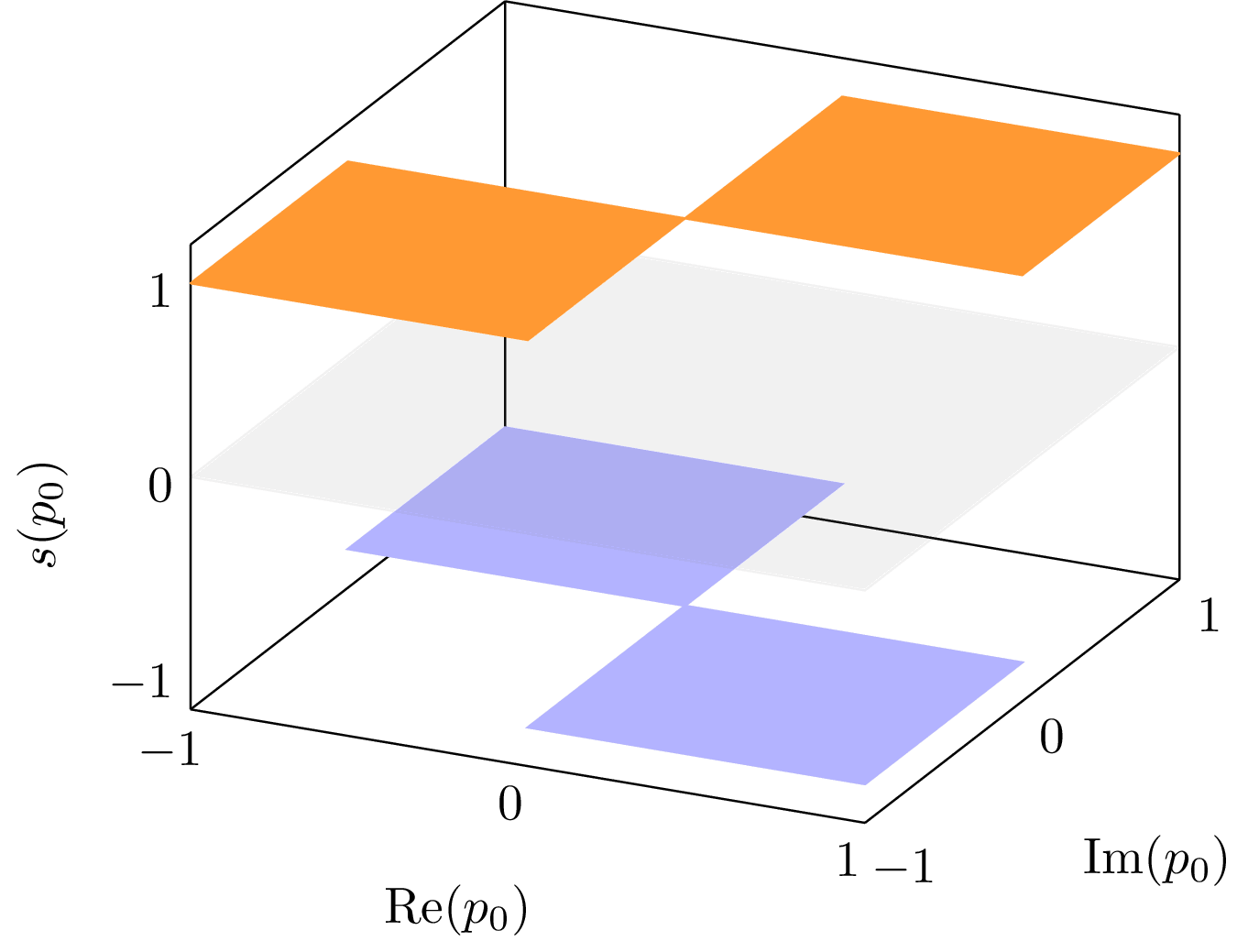Complex Sign Function
3d surface plot of the complex sign function $s(p_0) = \sign(\Re p_0 , \Im p_0)$ over the complex plane. Used in the Matsubara summation of thermal quantum field theory to split contour integrals in the complex plane into two parts, the first being branch-cut free and the second evident branch cut structure.

Download
Code
complex-sign-function.typ (55 lines)
complex-sign-function.tex (54 lines)